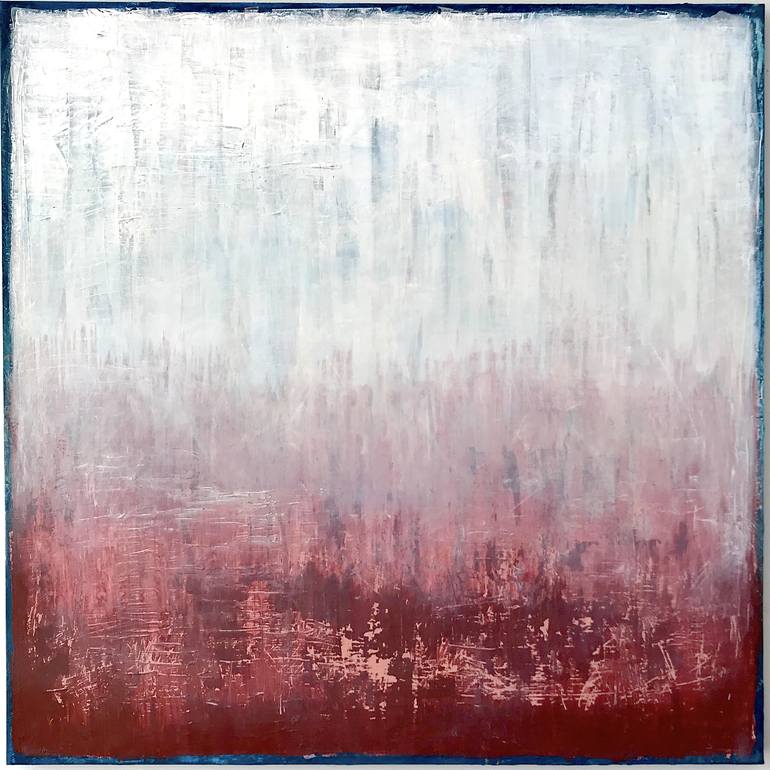






VIEW IN MY ROOM
Beyond the Wine-Dark Sea Painting
United Kingdom
Painting, Acrylic on Canvas
Size: 39.4 W x 39.4 H x 1.3 D in
Ships in a Box
Artist Recognition

Artist featured in a collection
About The Artwork
Wine-dark sea is a traditional English translation of oînops póntos, from oînos (οἶνος, "wine") + óps (ὄψ, "eye; face"). It is an epithet in Homer of uncertain meaning: a literal translation is "wine-face sea" (wine-faced, wine-eyed). It is attested five times in the Iliad and twelve times in the Odyssey, often to describe rough, stormy sea. The only other use of oînops in the works of Homer is for oxen (once in both his epic poems), where it seems to describe a reddish color, which has given rise to various speculations about what it could mean about either the state of Aegean Sea during antiquity or the color perception of Ancient Greeks.
Details & Dimensions
Painting:Acrylic on Canvas
Original:One-of-a-kind Artwork
Size:39.4 W x 39.4 H x 1.3 D in
Frame:Not Framed
Ready to Hang:Not applicable
Packaging:Ships in a Box
Shipping & Returns
Delivery Time:Typically 5-7 business days for domestic shipments, 10-14 business days for international shipments.
Handling:Ships in a box. Artists are responsible for packaging and adhering to Saatchi Art’s packaging guidelines.
Ships From:United Kingdom.
Customs:Shipments from United Kingdom may experience delays due to country's regulations for exporting valuable artworks.
Have additional questions?
Please visit our help section or contact us.
United Kingdom
Born in a remote village a short walk up the hill from artist Sir Stanley Spencer’s beloved Cookham, England, modern-day painter James Charles Hester also shares a reverence for that particular stretch of the River Thames. Citing it to have taught him everything he knows about light, shade, and texture. The only difference being that, unlike Spencer, his decision to follow the river out to its inevitable meeting with the sea and the greater world beyond was entirely of his own choosing. As such, it is no surprise that a great many of Hester’s paintings are scenes featuring water, albeit in varying degrees of abstraction. For it is within the abstract interpretations of nature that we can see the artist is firmly in his element. “I am constantly chasing an idea of variety within my work and it is my great hope that although I employ different levels of realism and abstraction, one could easily tell each piece was born of the same mind.” Presently sharing equal parts of the year between Malta and England, the artist is focusing his attention on capturing the almost limitless sights around Valletta, Mdina, and the Three Cities. Of which he says, “I could live a thousand lifetimes and still not have painted every view of this profoundly beautiful place. The river might have taught me light and shade, but it is the sea in relation to these shores that has taught me to look even closer at the complexity of colours and the harmony of a composition.”
Artist Recognition

Artist featured by Saatchi Art in a collection
Thousands Of Five-Star Reviews
We deliver world-class customer service to all of our art buyers.
Global Selection
Explore an unparalleled artwork selection by artists from around the world.
Satisfaction Guaranteed
Our 14-day satisfaction guarantee allows you to buy with confidence.
Support An Artist With Every Purchase
We pay our artists more on every sale than other galleries.
Need More Help?